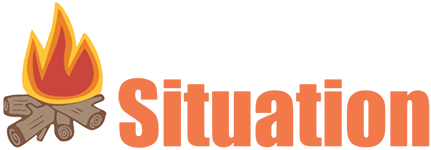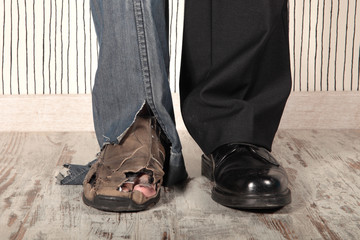How To Make Yeast the Old-Fashioned Way

They’ve made you believe you need a store to make bread. That without their neatly packaged packets of yeast, you’re helpless. But here’s the truth: humans were baking long before corporations started selling fermentation in foil. Real yeast isn’t a product you buy. It’s a living thing you can grow, capture, and keep alive with nothing more than flour, water, and patience.
Modern bread is built on shortcuts, and that’s exactly the problem. We’ve traded ancient knowledge for convenience. You don’t need commercial yeast to survive, but they need you to think you do. Because if you can’t make your own, you’ll always come back for more. That’s how dependence is built, one small packet at a time.
Why You Should Learn To Make Your Own Yeast
If supply chains snap tomorrow, the bread aisle will go empty in hours. And when that happens, people will finally realize how fragile “normal” really is. But those who know how to make yeast from the air itself, those people will still have warm bread, living cultures, and independence that no company can take away.
Making your own yeast isn’t just a survival skill. It’s a quiet act of rebellion. You’re reclaiming one of the oldest human abilities, capturing wild microbes and turning them into food. It’s the same process that built civilizations, fueled armies, and carried families through winters before refrigeration or power grids even existed.
The Simple Science of Real Yeast
Yeast is everywhere, on grains, in the air, even on your hands. It’s part of nature’s invisible machinery, waiting for moisture and warmth to come alive. When you mix flour and water, you’re giving these wild yeasts and bacteria a home. They start to eat, grow, and release gas, transforming your mixture into a living culture that can raise bread and brew drinks.
Commercial yeast is just a domesticated version of this natural process. It’s bred for speed and predictability, not for resilience or flavor. When you make your own, you’re using the same wild organisms that humans relied on for thousands of years, the kind that survive without freezers, factories, or expiration dates.
How To Make Yeast From Scratch
- Mix Flour and Water – In a glass jar or bowl, mix one cup of whole wheat or rye flour with one cup of lukewarm water. Stir until smooth. Cover it loosely with a cloth or paper towel so air can circulate.
- Feed It Daily – Every 24 hours, stir the mixture and discard half. Add another half cup of flour and half cup of water. This feeding keeps the yeast growing strong.
- Watch It Come Alive – After a few days, bubbles will appear. It will smell slightly tangy or fruity; that’s fermentation. When it doubles in size within a few hours of feeding, your yeast is ready to use.
- Store and Use – Keep your yeast culture in the fridge when not in use. Feed it once a week to keep it active. When baking, remove some, let it warm up, feed it, and wait for it to bubble again before adding it to dough.
That’s it. No factory, no chemicals, no supply chain. Just flour, water, and time, the same ingredients that built every loaf of bread before industrialization stepped in.
Keeping Your Yeast Alive
A yeast culture is like a pet you feed instead of walk. If you keep it nourished, it will serve you for years. You can even dry some on parchment paper for long-term storage. Once it’s dry, crumble it up and store it in a sealed jar. When you need it again, mix it with warm water and a bit of flour. In a day or two, it’ll be alive again.
In a grid-down world, this skill isn’t optional; it’s survival. Bread is more than food; it’s morale, stability, and strength. Being able to make it from nothing is what separates survivors from victims.
The Real Reason They Don’t Teach You This
Here’s the uncomfortable truth: skills like this were erased on purpose. The less you know how to do for yourself, the more you need someone else to do it for you. Making your own yeast doesn’t make anyone rich. It doesn’t require packaging, marketing, or supply lines. It just works. And that makes it dangerous to anyone who profits from dependency.
When people lose old skills, they lose freedom. But when they rediscover them, everything changes. You realize how unnecessary most of the modern system really is, and how much power you still have in your own hands.
Related: Lost Life Skills
The Knowledge That Keeps You Fed
If you can make yeast, you can make bread. If you can make bread, you can sustain yourself when everything else runs out. These are the skills that built resilience, families, and entire communities before electricity ever existed.
In a world where the next crisis is always one disaster away, knowledge is your real currency. And this one, the ability to capture life from air and turn it into food, might be one of the most valuable skills left.
Reclaim the Old Ways with The Lost Superfoods
Modern society runs on fragile systems. When they fail, food disappears fast. The Lost Superfoods is a survival blueprint that brings back the forgotten foods that kept people alive through blackouts, wars, and famines. Inside, you’ll find recipes that last for decades without refrigeration, and storage methods that turn simple ingredients into long-lasting nutrition.
From shelf-stable stews to traditional preservation techniques, this book shows you how to feed yourself and your family when supply chains collapse and panic spreads. It’s not theory; it’s proven survival knowledge passed down from people who lived through real scarcity.
If you’re ready to stop depending on the system and start building real food security, The Lost Superfoods is where it begins. Because when the shelves go empty, the ones who remember how to make their own yeast will be the ones still breaking bread.
You may also like:

Hardtack: The Survival Bread That Refuses to Die
This Bug Will Kill Most Americans During The Next Crisis (Video)
Amish Cinnamon Bread: Friendship Recipe
Soft Milk Bread Without An Oven
How To Make Pine Bark Bread
Read the full article here









